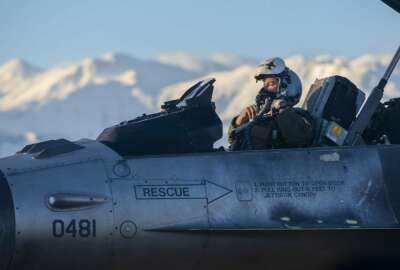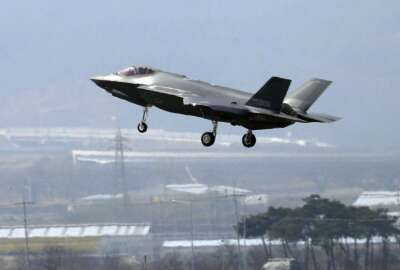
New evaluation system for Air Force officers coming soon
The Air Force is looking at how it assesses its officers to fit its needs with 21st century demands.
The Air Force is tinkering with the way it promotes officers and is keeping its fingers crossed that Congress may give it some more flexibility on the “up or out” system in the future.
In the last month, the service began a planned overhaul of its officer evaluation system, said Lt. Gen. Gina Grosso, deputy chief of staff for manpower, personnel and services headquarters for the Air Force during an Oct. 12 speech. The Air Force wants to change the way officers are appraised and how they can present themselves to superiors when they are up for promotion.
Though the overhaul is in its infancy, it will look at how the Air Force understands performance for the 21st century officer, Grosso said during an Air Force Association event in Arlington, Virginia.
“Really we are doing a cradle to grave look … we are starting that now and you can imagine that takes a lot of bandwidth, honestly, but everything is on the table: How we evaluate people, how do we think about the promotion recommendation form, how do we stratify?” Grosso said.
That undertaking may take a year to a year and a half to complete. Grosso said the Air Force is talking to its officer airmen right now. It will then decide what needs to be fixed and put in recommendations to senior leadership.
The Air Force has been planning to change its evaluation system since 2014.
The service completed its rebuild of the enlisted evaluation system last year. The Air Force created static closeout dates for each rank, updated performance report forms and limited stratification restrictions.
Static closeout dates require airmen to send in performance reports in the same time frame.
“When all Airmen in a unit are assessed for accomplishments during the same time frame, factors like special events or increased workload will not unfairly favor one Airman over another. Quality of performance then becomes the primary focus,” Will Brown, the AFPC Evaluation and Recognition Programs Branch chief said in 2014.
Grosso said a lot of officers were interested in the static closeout date method.
Stratification restrictions limit the percentage of airmen in each rank that may be endorsed by a senior rater.
“This is one of the key steps we need to take to truly ensure performance counts and that the promotion system is about performance first,” said Air Force Chief Master Sgt. James Cody when the new system rolled out. “There has to be a level of discernment when it comes to promotions; this step gives us the tools to do just that.”
The overhaul may be one way the Air Force can scoot around some of the “up or out” restrictions mandated by law.
Currently, officers are given a certain amount of time in each rank and must be promoted to the next rank within that time. They face promotion boards, which either pass over a candidate or promote him. Two passes and the officer must leave the service.
That criterion has pushed out some talented people in the Air Force, Grosso said. It forces some people that are functioning well to leave the military. A change in the evaluation system may give promotion boards more credentials to look at when assessing an officer, which may lead to different types of officers being promoted.
Grosso questioned that system during her speech and said she hoped Congress could give the Air Force some more leniency in applying up or out.
“How can we think differently about career progression?” Grosso said. “You don’t have the option of saying ‘Hey, I don’t want to compete [for promotion] this time. I know I haven’t done things I need to do. I frankly am happy where I am. … You’ll hear some pilots say ‘Hey can’t I just fly for several years?’”
She added that some personnel told her they love being at the base level and in a wing unit, even those that are captain billets.
Grosso said the Air Force is hoping for some flexibility from Congress in the next year or two where it would allow individuals to take themselves out of the promotion process or change the length of time officers can stay at a rank.
Up or out “is a system that was designed for a different force, so in the force we have today, the talent that we need, I think [up or out] is too rigid. But, I do want to qualify, I’m not trying to throw the baby out with the bathwater because it’s given us the most competent force we’ve ever had, so there may be parts of that we want to keep. How do you get the best of both worlds?” Grosso said.
Copyright © 2025 Federal News Network. All rights reserved. This website is not intended for users located within the European Economic Area.
Scott Maucione is a defense reporter for Federal News Network and reports on human capital, workforce and the Defense Department at-large.
Follow @smaucioneWFED




